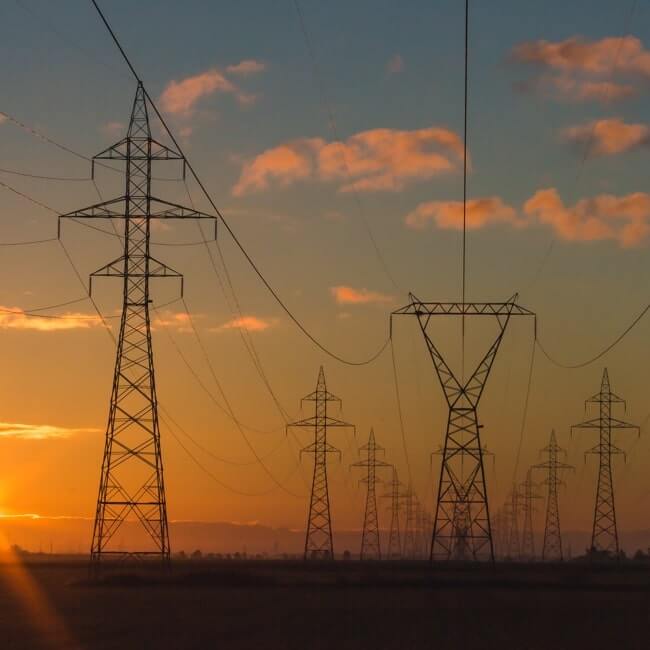With Argentina’s Rigi regulations published, what now?

Argentina’s government published rules last month to guide its Rigi investment-promotion regime, which is part of the so-called Bases economic framework law designed to ease state control over the cash-strapped economy and spur investment.
Under Rigi, qualifying projects will receive tax, customs and forex benefits, along with promised legal and regulatory stability for 30 years. Projects have two years to seek the benefits and must deploy at least 40% of the minimum investment agreed upon within two years of getting the green light.
President Javier Milei recently said that US$50 billion in projects have been confirmed.
To find out more about the road ahead, BNamericas conducted an email interview with Ezequiel Artola, a partner at the Argentine office of global law firm Baker McKenzie.
BNamericas: The government recently published the Rigi regulations. What happens next? For example, do interested companies now need to apply or is more ‘fine print’ still needed?
Artola: Yes, interested companies must apply to get the benefits of Rigi. They have up to two years from the date of the ‘Bases Law’ to apply and must complete at least 40% of the minimum investment amount during the first two years from the project's approval.
The additional fine print was included in decree 749/2024 issued on August 23, regulating the ‘Rigi’ introduced by the Bases Law No. 27,742. Relevant matters regulated are:
- Creation of specific registries related to Rigi.
- The scope of application to certain subsectors of the different industries covered by Rigi and the minimum investment amounts for each of them.
- Certain investments to be computed to comply with the minimum investment amounts.
- The tax, customs and exchange benefits and stability.
- Participation and benefits to suppliers of projects under Rigi.
- Cases not contemplated in the Bases Law, such as the possibility of applying Rigi to existing entities and the expansion of preexisting projects. It also establishes additional procedural regulations for the resolution of disputes.
Specific authorities – the federal tax authority, central bank and others – should issue additional regulations in the next 30 days as from August 23. In line with this, the central bank published a regulation on Rigi in late August.
In addition, not all provinces have approved the regime. The ones that have approved or taken steps towards such approval are Río Negro, Jujuy, Mendoza, San Juan, Chubut and Salta.
Note that lack of those regulations should not prevent companies from applying to the regime with the ministry of economy as it is Rigi’s relevant enforcement authority.
BNamericas: Related to this, how clear are the regulations, and do you envisage the need for clarifications further down the road?
Artola: The regulation is generally clear. However, applications will vary from one project to the other. All projects will have to make their case in their application, considering different aspects such as the stage of development, type of entities, need for restructuring, and other key matters to see how they will fit in with the regulation’s provisions. One of the main issues is how the incentives will apply to projects that are in construction or how to separate existing and new projects.
BNamericas: How does the investment community view Rigi's incentives? We’re talking about large sums of money. What risks do they see?
Artola: In general, companies view the incentives positively and are already considering them for the future development of their projects. Risks mainly relate to the country’s historic lack of legal and economic stability. In response to this risk, the incentive regime has implemented relevant protections. Among these is the possibility of filing claims in the event of non-compliance before arbitration tribunals outside the country.
BNamericas: In general, do you envisage any trends? For example, could we see local, experienced companies becoming the first to apply?
Artola: Yes, we see local companies being the first to apply. They make decisions faster and are more used to the local risks; Rigi is a clear improvement to reduce that risk. Foreign investors are evaluating their participation in the program, especially in the area of natural resources.
BNamericas: Related to this, at BNamericas, we expect midstream hydrocarbons projects and mining projects, including power supply initiatives, to form the vanguard. What are your views? Are there any other sectors or projects ‘ripe’ for Rigi?
Artola: Yes, we agree. We have mainly seen interest in mining, oil and gas midstream, power supply and infrastructure sectors that should be the ones taking the lead to apply for the benefits under Rigi.
BNamericas: Finally, in terms of Rigi, what type of work could this generate for Baker McKenzie?
Artola: Clients have reached out to us and we expect they will continue to do so in a variety of matters related to Rigi. From interpretation, to structuring, transactional and application to the regime, and not only potential project owners and developers but also service providers to such projects that may benefit as well.
This interview was originally published on September 3
Subscribe to the leading business intelligence platform in Latin America with different tools for Providers, Contractors, Operators, Government, Legal, Financial and Insurance industries.
News in: Political Risk & Macro (Argentina)

IMF Executive Board Completes the 8th Review of the Extended Arrangement Under the Extended Fund Facility for Argen...
The Executive Board’s decision enables a disbursement of around US$800 million to support the authorities’ efforts to entrench the disinflation pro...

Roundup: Bolivia road blockades, Chile hospital, Argentina public works
BNamericas presents a roundup of infrastructure sector news.
Subscribe to Latin America’s most trusted business intelligence platform.
Other projects
Get key information on thousands of projects in Latin America, from current stage, to capex, related companies, key contacts and more.
- Project: Santa Marta
- Current stage:

- Updated:
8 hours ago
- Project: Implementation and Paving of Beira Avenue - Mar de Barreiros
- Current stage:

- Updated:
1 day ago
- Project: Consimares Waste Treatment Center
- Current stage:

- Updated:
1 day ago
- Project: T-MEC corridor
- Current stage:

- Updated:
1 day ago
- Project: Monclova
- Current stage:

- Updated:
1 day ago
- Project: Cumayasa 3 photovoltaic park
- Current stage:

- Updated:
1 day ago
- Project: CONCESSION: Lot 5 - Integration Highway (MT-020/326, Paranatinga - Canarana section)
- Current stage:

- Updated:
1 day ago
- Project: Cumayasa 4 solar park (former Renewable Energy World Dominicus)
- Current stage:

- Updated:
1 day ago
- Project: Microsoft Data Center in Sumaré (Sumaré East)
- Current stage:

- Updated:
1 day ago
- Project: Soacha Cable Car
- Current stage:

- Updated:
1 day ago
Other companies
Get key information on thousands of companies in Latin America, from projects, to contacts, shareholders, related news and more.
- Company: Andes Solar S.A. (Andes Solar)
-
The description contained in this profile was taken directly from an official source and has not been edited or modified by BNamericas researchers, but may have been automatical...
- Company: Gluyas Construcciones S.A. de C.V. (Gluyas Construcciones)
-
Gluyas Construcciones S.A. de C.V. is a Mexican construction company based in Hermosillo, in Sonora state. Founded in 1989, the company offers road construction, widening and up...
- Company: Mathiesen S.A.C. (Grupo Mathiesen)
-
The description contained in this profile was extracted directly from an official source and has not been edited or modified by BNamericas researchers, but may have been machine...
- Company: Libertad SpA (Libertad)
-
Libertad SpA is a Chilean firm incorporated in 2015 and based in Santiago which develops the 116-MW Libertad photovoltaic project in the region of Atacama, in northern Chile, a ...
- Company: Corporación Mexicana de Asesores en Derecho, S.C. (COMAD)
-
The description contained in this profile was taken directly from an official source and has not been edited or modified by BNamericas researchers, but may have been automatical...
- Company: Procopal S.A. (Procopal)
- Company: Modjeski and Masters, Inc. (Modjeski and Masters)
-
The description included in this profile was taken directly from an official source and has not been modified or edited by the BNamericas’ researchers. However, it may have been...





